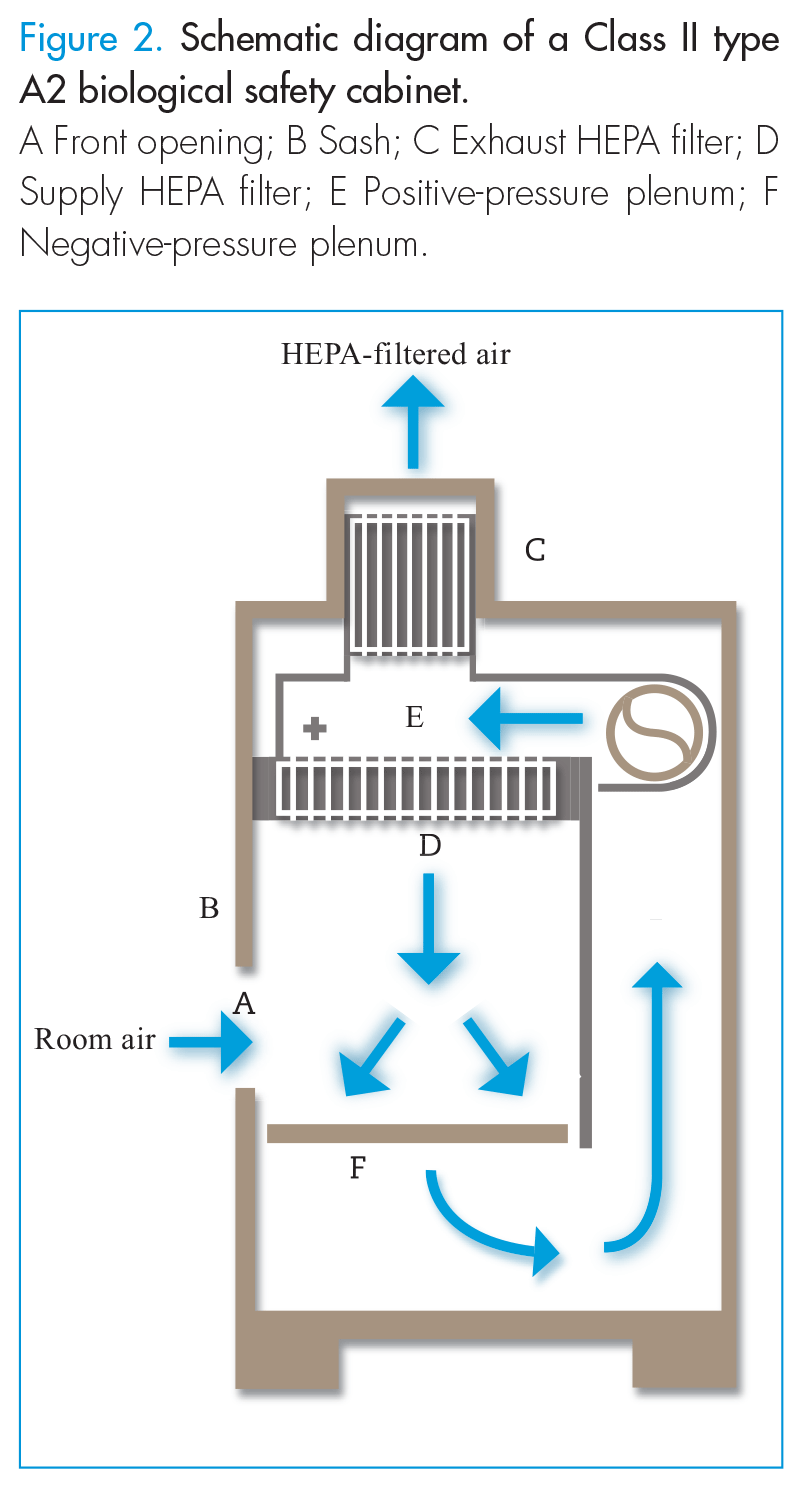Liens transversaux de livre pour 6.1.3 Class II type A2 biological safety cabinets
Class II BSCs differ from Class I cabinets in that they allow only air from a HEPA-filtered (sterile) supply to flow over the work surface.
A Class II type A2 BSC is shown in Figure 2. An internal fan draws room air (supply air) into the cabinet through the front opening and then into the front intake grill. After passing through the grill, the supply air is drawn upwards and through a HEPA filter before flowing downwards over the work surface.
As the air flows downwards at about 6–18 cm above the work surface it splits so that approximately one half of the volume of the air passes through the front exhaust grill and the other half passes through the rear exhaust grill. Any aerosol particles generated at the work surface are immediately captured in this downward airflow and passed through the front or rear exhaust grills, thereby providing the highest level of product protection. The air is then discharged through the rear plenum into the space between the supply filter and exhaust filter located at the top of the cabinet. Owing to the relative size of these filters, 60–70% of the air recirculates through the supply HEPA filter back into the work zone; the remaining 30–40% passes through the exhaust filter into the room or outdoors.
Air from a Class II type A2 exhaust can be recirculated to the room or discharged to the outside of the building through a thimble connected to a dedicated duct; it must NOT be discharged through the building’s exhaust system.
In a containment laboratory where air from the Class II BSC is recirculated to the room, a separate dedicated ventilation system is needed to ensure unidirectional flow of air into the laboratory with 6-12 ACH. Recirculating the exhaust air to the room has the advantage of lowering the energy costs of the building because heated or cooled air is not being passed to the outside environment.

 Retour
Retour